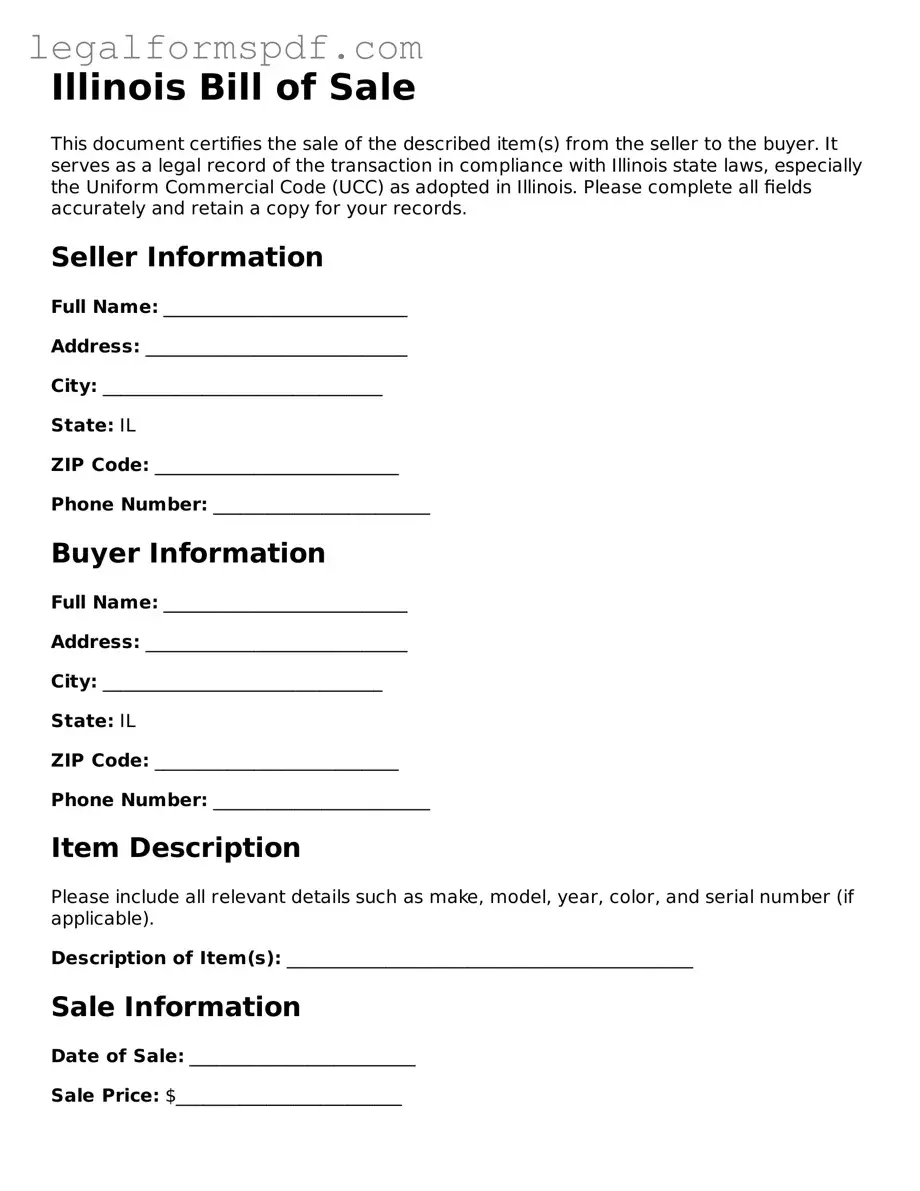Illinois Bill of Sale
This document certifies the sale of the described item(s) from the seller to the buyer. It serves as a legal record of the transaction in compliance with Illinois state laws, especially the Uniform Commercial Code (UCC) as adopted in Illinois. Please complete all fields accurately and retain a copy for your records.
Seller Information
Full Name: ___________________________
Address: _____________________________
City: _______________________________
State: IL
ZIP Code: ___________________________
Phone Number: ________________________
Buyer Information
Full Name: ___________________________
Address: _____________________________
City: _______________________________
State: IL
ZIP Code: ___________________________
Phone Number: ________________________
Item Description
Please include all relevant details such as make, model, year, color, and serial number (if applicable).
Description of Item(s): _____________________________________________
Sale Information
Date of Sale: _________________________
Sale Price: $_________________________
Signatures
Both parties agree that the above information is accurate and that the item(s) are sold "as-is", with no warranties expressed or implied by the seller.
Seller's Signature: _________________________ Date: ____________
Buyer's Signature: _________________________ Date: ____________
Witness (if required)
Although not always required, it is highly recommended to have a witness present at the time of signing.
Witness's Signature: ______________________ Date: ____________
By signing, the witness affirms the identities of both the buyer and seller and the occurrence of the transaction on the date and place specified.
Additional Information
- Keep a copy of this document for personal records.
- Check with local government offices for any additional steps required to finalize the sale, such as title transfer and registration.
- This document does not constitute a title transfer. Ensure compliance with all Illinois state requirements to legally transfer ownership.
